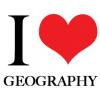- 2 replies
- 1,447 views
- Add Reply
- 3 replies
- 2,100 views
- Add Reply
- 2 replies
- 1,825 views
- Add Reply
GIS español
By alita_de_pollo,
Saludos
Deseaba saber si hay usuarios que hablan español en el foro o es imperativo tener que comunicarnos en ingles
todas las buenas vibras desde Bolivia.
(ask) Modelling rockfall with GIS
Can we create filters?
By sravanisarma,
Hi,
I exported excel data to the boundless exchange and i created a map using layers. Now, i need two filters one for regions and other for
facility type. If i select both the filters, that filtered data must be able to project on the map. Is it possible to do on maps???
regarding maps
Issue on mapping a city! How to create a vector based map?
By Katerine,
Hi guys. I'm newbie here in the forum and hopefully I'm posting it in the right section.
Well,
I am developing a map of a city to serve a tourist guide in a hostel. I've encountered a few issues while doing it, specially because i've never done it before. I must be able to choose and insert in my map only touristic spots I find to be relevant for the guests in my hostel and that is why the maps provided by Openstreetmap and Google maps are not worth to me, they are always provided with
-
Forum Statistics
8.8k
Total Topics43.5k
Total Posts




